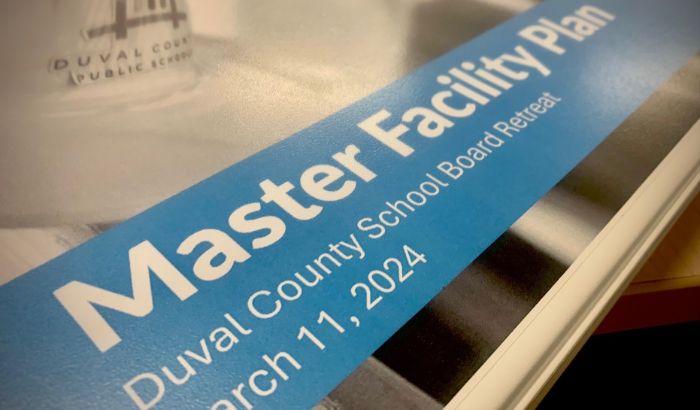April 2, 2024 – Important conversations are beginning to take place about the Master Facility Plan (MFP) – the plan to rebuild and renovate Team Duval schools – and the district wants to make sure the community is aware.
In December, Team Duval shared how increases in construction costs and charter school revenue-sharing requirements have impacted the bottom line of the MFP, resulting in a need to explore ways to mitigate a $1.4 billion budget gap. One proposed strategy involves “right-sizing” the district for projected enrollment through school consolidations.
In March, the Duval County School Board met to explore various options. They heard from district staff and logistical planning consultants and spent hours reviewing proposals.
In transparency to the community, an overview of this discussion has been provided below.
Exploring school consolidations, boundaries, and feeder patterns
While conversations around closing and consolidating schools are never easy, the district has a duty to be good stewards of public and taxpayer resources. School consolidations, which enable more efficient operations, have two immediate impacts: they reduce funding needed for facilities and reduce school-level administrative operating costs. This ultimately allows the district to invest more into teaching, learning, and student support. In the end, this is a huge benefit— not just as a district looking to be fiscally responsible, but as educators who want the very best for students.
There is, however, an intangible cost to school consolidations. They cause re-drawing of school boundaries, which has an immediate impact on families and students. While consolidations may make sense economically, this must be balanced against immediate costs borne by students and families impacted by the change.
With that in mind, the consultants were asked to look wholistically at the district, considering each school’s enrollment, feeder patterns, enrollment trends, forecasts for new births, county growth, development, and other variables. These consultants presented a first draft to begin School Board discussions in February. Initial discussions among the board members led to a second draft presented over a six-hour meeting on March 11.
In their proposed changes to the MFP, these consultants did more than just examine school consolidations. They also proposed new, geographically sensible, cohesive boundaries that ensure students from each elementary school feed into the same middle school, and students from each middle school feed into the same high school.
Many of the district’s current boundaries are disjointed, and in some cases disconnected, often lacking meaningful, strategic feeder patterns. Opportunities to build cohesive academic and career pathways along with strong school-family communities are immediately visible in the consultants’ draft. As always, the district will remain a full-choice district for families looking for additional options.
Next steps
During the meeting, the School Board spent hours examining the proposed scenarios, asking questions, and providing feedback. By the end of the meeting, one thing was clear — This conversation is far from over. This is early in the process, and there will be more meetings and discussions.
These future discussions will include a full set of community conversations involving all our stakeholders. As with the original Master Facility Plan, the district gathered community input and were able to find even better ideas through those conversations.
The next step – the district will provide the School Board with a timeline and process for conducting this dialog in the community, so that Team Duval can move collaboratively to the best decisions for students, schools, and the community.









1 Comment
Comments are closed.